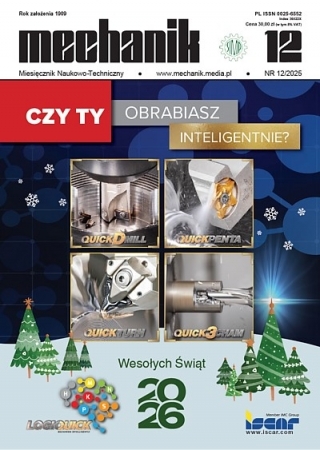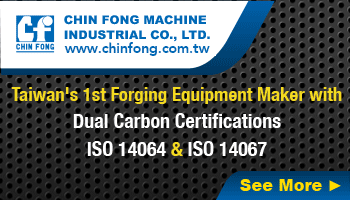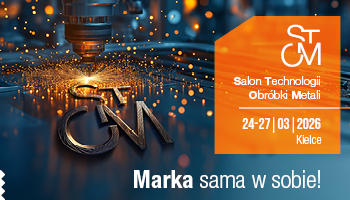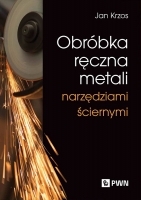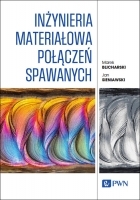The influence of non-conventional sintering methods on grain growth and properties of alumina sinters
Wpływ niekonwencjonalnych metod spiekania na rozrost ziaren i właściwości spieków tlenku glinu
Mechanik nr 02/2015 - Artykuły z Międzynarodowej Konferencji Innovative Manufacturing Technology IMT 2014 zamieszczone na płycie CD
ABSTRACT: The aim of this study was to obtain ceramic alumina materials by using the conventional free sintering process, 2.45 GHz microwave sintering and spark plasma sintering (SPS). Technical produced by Alcoa and ultra-pure alumina produced by Atlantic Equipment Engineers was used to obtain specimens. After sintering, the materials were subjected to studies of their physical and mechanical properties and carried out SEM observation using scanning electron microscope. The effect of temperature and time of sintering on the density, Young’s modulus and Vickers hardness of Al2O3 ceramics was determined. Mechanical and physical properties of the obtained materials were compared between the methods of sintering. On the basis of images from scanning electron microscope was performed quantitative analysis allows to determine the degree of grain growth of alumina after sintering. Our calculations were based on classic formulas of stereology for single-phase structure. The use of advanced sintering processes allowed to receive alumina ceramic materials with good mechanical and physical properties at the time of one minute for microwave sintering to ten minutes for spark plasma sintering. The non-conventional methods for sintering ceramics primarily comprises spark plasma sintering and microwave sintering. Microwave and SPS sintering methods did not prevent grains growth of Al2O3, and even resulted in their growth.
KEYWORDS: ceramic alumina materials, non-conventional sintering methods, grain growth, microstructure investigations.
STRESZCZENIE: Celem przeprowadzonych badań było otrzymanie spieków tlenku glinu przez zastosowanie konwencjonalnego spiekania swobodnego, mikrofalowego przy częstotliwości mikrofal 2,45 GHz oraz spiekania metodą SPS. Do otrzymywania spieków zastosowano techniczny proszek Al2O3 produkowany przez Alcoa oraz ultraczysty proszek produkowany przez Atlantic Equipment Engineers. Otrzymane spieki były przygotowywane do badań właściwości fizyko-mechanicznych oraz przeprowadzenia obserwacji mikrostrukturalnych przy zastosowaniu skaningowej mikroskopii elektronowej. Określono wpływ temperatury i czasu spiekania na gęstość, moduł Younga oraz twardość Vickersa ceramiki Al2O3. Właściwości fizyko-mechaniczne otrzymanych spieków zostały porównane pomiędzy zastosowanymi metodami spiekania. Na podstawie obserwacji SEM wykonano ilościowe analizy i obliczenia pozwalające na określenie stopnia rozrostu ziaren tlenku glinu po spiekaniu. Nasze obliczenia były oparte na klasycznych wzorach stereologicznych dla monofazowej struktury. Zastosowanie zaawansowanych procesów spiekania pozwoliło otrzymać spieki tlenku glinu o dobrych właściwościach fizyko-mechanicznych podczas jednej minuty spiekania mikrofalowego i dziesięciu minut dla spiekania SPS. Niekonwencjonalne metody spiekania obejmują głównie metodę SPS oraz metodę mikrofalową. Metody spiekania mikrofalowego oraz SPS nie zapobiegły rozrostowi ziaren Al2O3, a wręcz przeciwnie wpłynęły na ich rozrost.
SŁOWA KLUCZOWE: spieki tlenku glinu, niekonwencjonalne metody spiekania, rozrost ziaren, badania mikrostruktury.
BIBLIOGRAFIA / BIBLIOGRAPHY:
- TIANBEN G., HONGZHI L., Microwave sintering of Al2O3-ZrO2-WC-Co cermets, Journal of Wuhan University of Technology-Mater. Sci. Ed., Vol. 26, Issue 2, 2011, 289-291.
- SMUK B., SZUTKOWSKA M., WALTER J., Alumina ceramics with partially stabilized zirconia for cutting tools, Journal of Materials Processing Technology, Vol. 133, 2003, 195–198.
- RAO P., IWASA M., I. KONDOH I., Properties of low-temperature-sintered high purity α-alumina ceramics, Journal of Materials Science Letters, Vol. 19, 2000, 543–545.
- RAJESWARI K., HAREESH U.S., SUBASRI R., CHAKRAVARTY D., Comparative evaluation of spark plasma (SPS), microwave (MWS), two stage sintering (TSS) and conventional sintering (CRH) on the densification and micro structural evolution of fully stabilized zirconia ceramics, Science of Sintering, Vol. 42, 2010, 259-267.
- HEUGUET R., MARINEL S., THUAULT A., BADEV A., Effects of the susceptor dielectric properties on the microwave sintering of alumina, Journal of the American Ceramic Society, Vol. 96, 2013, 3728-3736.
- PERT E., CARMEL Y., BIRNBOIM A., OLERUNYOLEMI T., GERSHON D., CALAME J., Temperature measurements during microwave processing: the significance of thermocouple effects, Journal of the American Ceramic Society, Vol. 84, 2001,1981-1986.
- WYŻGA P., JAWORSKA L., BUĆKO M., PUTYRA P., KALINKA A., Sintering of TiB2-TiN nano- and micropowders, Composites, Vol. 1, 2011, 34-38.
- TOKITA M., Mechanism of spark plasma sintering, Proceedings of the 2000 Powder Metallurgy World Congress (Kyoto, Japan, November 2000), Edited by K.Kosuge and H.Nagai. Japanese Society of Powder and Powder Metallurgy, Kyoto, Japan, 2001, 729–732.
- KWON H., PARK D.H., PARK Y., SILVAIN J.F., KAWASAKI A., Spark plasma sintering behavior of pure aluminium depending on various sintering temperatures, Met. Mater. Int., Vol. 16, No. 1, 2010,71-75.
- WALA A., Mikroskopowe badania metalograficzne, Wyd. Uniwersytetu Śląskiego, 2004, Katowice.




